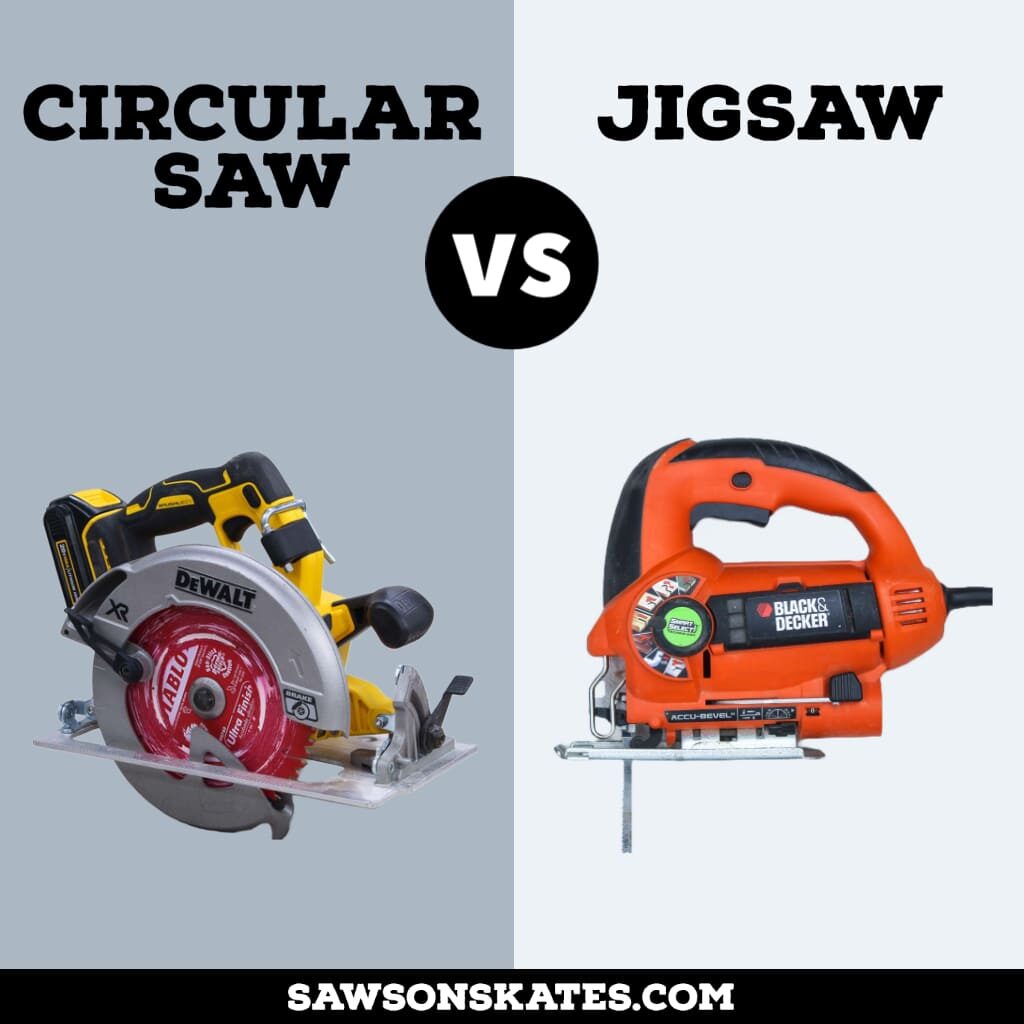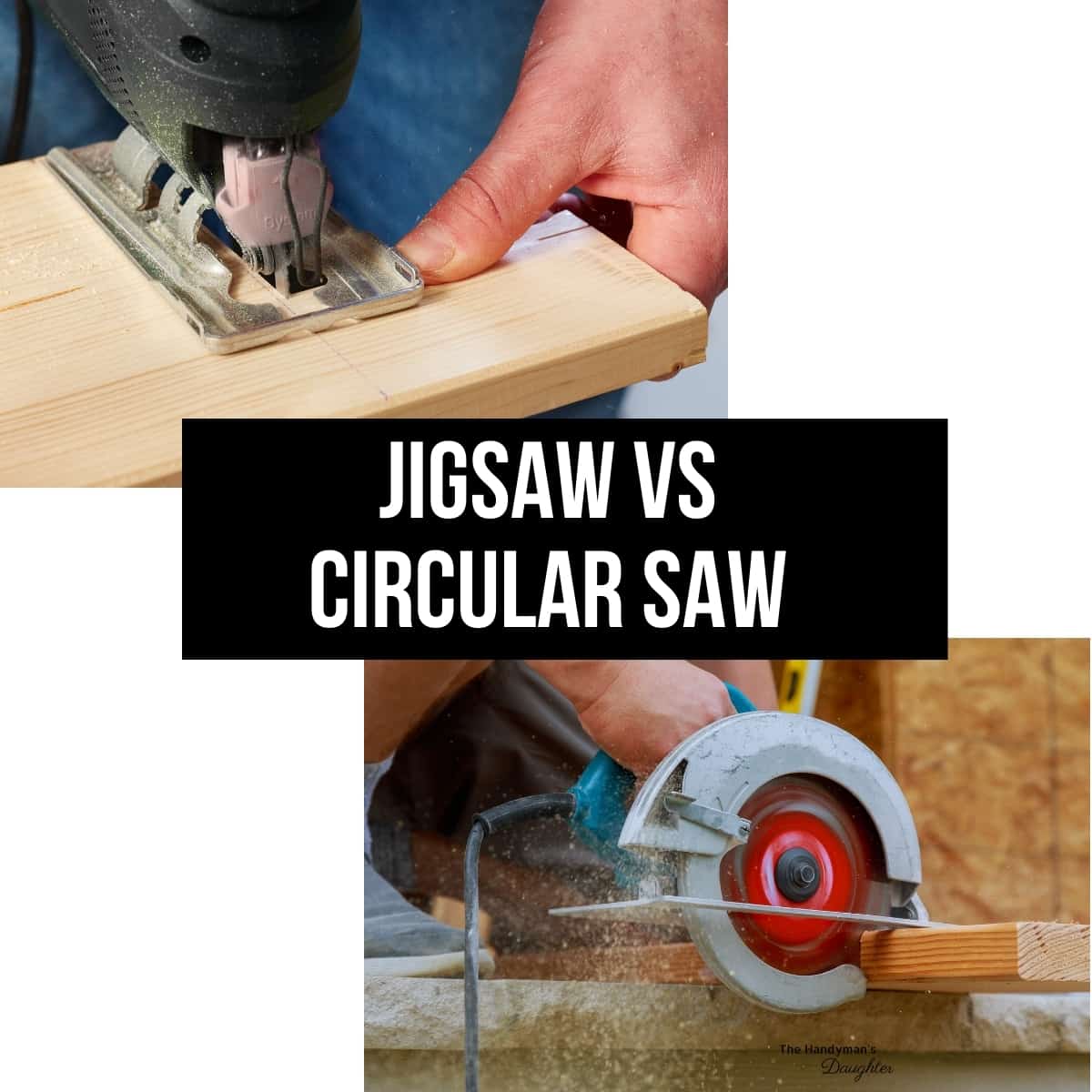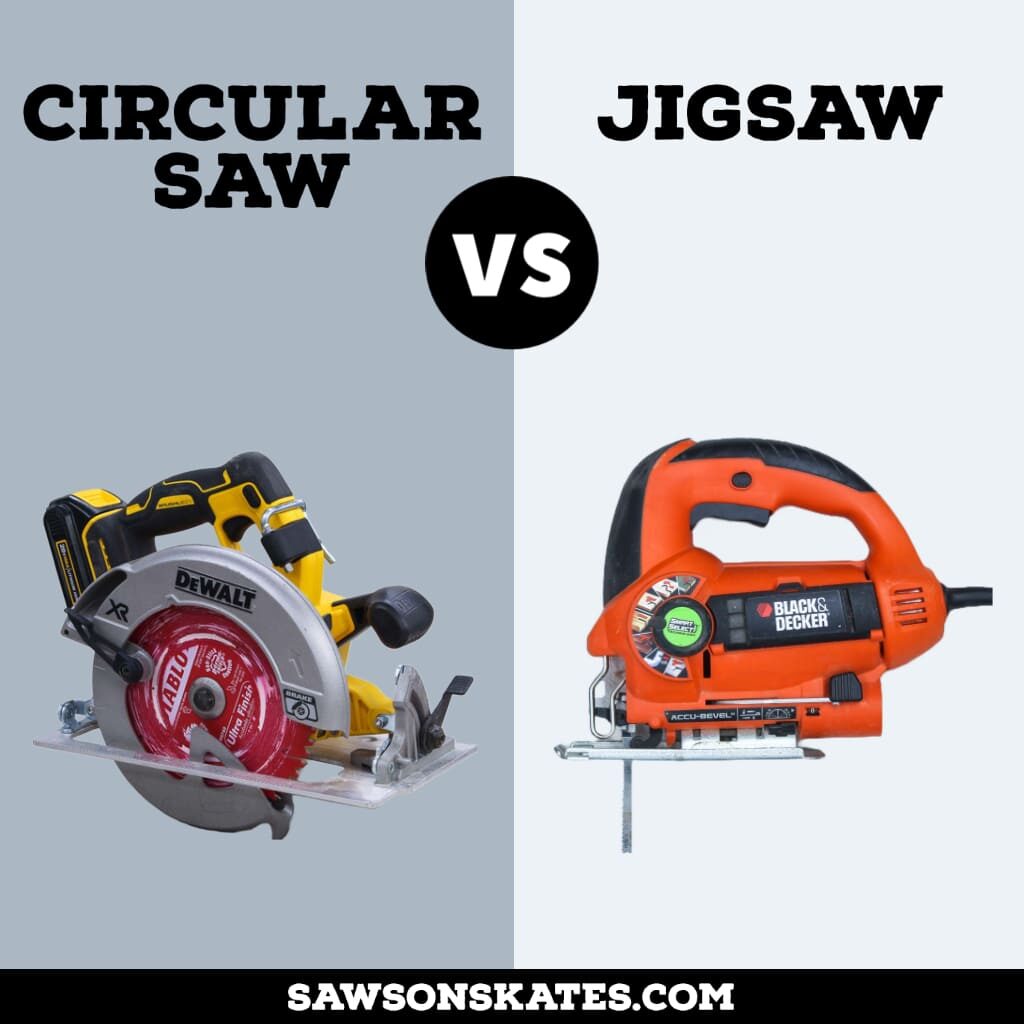Looking to find out whether a jigsaw or a circular saw is the better tool? Well, you’ve come to the right place! In this article, we’ll dive into the world of power tools to help you decide which one is the right fit for your needs. So, sit back, relax, and join us on this sawdust-filled adventure!
When it comes to cutting through materials like wood, there are a few options available, but two of the most popular ones are the jigsaw and the circular saw. Both have their own unique features and advantages, making it difficult to determine which one is better. But fear not, we’re here to break it down for you in a way that’s easy to understand.
So, whether you’re a DIY enthusiast or a budding carpenter, let’s explore the pros and cons of these two amazing tools. By the end of this article, you’ll have a clear understanding of whether a jigsaw or a circular saw is the one that will help you bring your woodworking dreams to life. Let’s get started!

Is a Jigsaw Better Than a Circular Saw?
When it comes to power tools, two popular options for woodworking projects are the jigsaw and the circular saw. Both tools have their own unique features and benefits, but which one is better? In this article, we will explore the differences between a jigsaw and a circular saw, their pros and cons, and ultimately determine which tool is more suitable for different woodworking tasks. Whether you’re a DIY enthusiast or a professional woodworker, understanding the strengths and limitations of these tools is essential for making informed decisions and achieving the best results.
The Jigsaw: A Versatile Cutting Tool
The jigsaw is a versatile cutting tool that is designed for intricate cuts and curves. With its narrow blade and orbital action, it allows for precise and intricate cuts in various materials, including wood, plastic, and metal. The jigsaw is a handheld tool that offers excellent maneuverability, making it ideal for detailed work such as scrollwork, shaping, and cutting out patterns. Additionally, jigsaws come with different blade options, allowing you to choose the right blade for the material you are working with.
One of the key advantages of a jigsaw is its ability to make curved or irregular cuts. It is the go-to tool for tasks such as cutting out circles, arcs, and irregular shapes. The jigsaw’s blade can be easily guided along a pattern or a marked line, giving you precise control over the cutting process. This makes it perfect for projects that involve creating designs or working with delicate materials that require careful handling. Furthermore, jigsaws often feature variable speed settings, allowing you to adjust the speed according to the material and the type of cut you are making.
Despite its versatility, the jigsaw does have some limitations. Due to its narrow blade and the need for manual guidance, it may not be the most efficient tool for cutting through thick materials or making long, straight cuts. The jigsaw blade can also bend or deflect if too much pressure is applied, potentially affecting the accuracy of the cut. However, when it comes to intricate, curved, or detailed cuts, the jigsaw is a top-performing tool that gives you the control and precision you need for a variety of woodworking tasks.
The Circular Saw: Power and Efficiency
The circular saw is a powerful cutting tool that is designed for speed and efficiency. It is equipped with a circular blade that rotates at high speeds, allowing it to make straight, long cuts through various materials, including wood, plywood, and even masonry. Unlike the jigsaw, the circular saw requires a stable surface for cutting, such as a workbench or a sawhorse. It is typically used for ripping boards, cutting plywood sheets, and making quick, straight cuts in large quantities.
One of the main advantages of the circular saw is its ability to cut through thick materials with ease. The large circular blade, combined with its powerful motor, enables the circular saw to handle demanding cutting tasks, such as cutting through hardwood or thick plywood. The circular saw is also capable of making bevel cuts, allowing you to create angled edges or make miter cuts for joining pieces of wood at different angles.
Despite its power and efficiency, the circular saw may not be the ideal choice for intricate or detail-oriented tasks. Its straight cuts are not as precise as those made by a jigsaw, and it may not be suitable for projects that require curved cuts or pattern work. Additionally, the circular saw’s large size and weight make it less maneuverable than a jigsaw, which may be a disadvantage when working in tight or confined spaces. However, when it comes to straight cuts, speed, and cutting through thick materials, the circular saw is a solid choice.
The Benefits of Using a Jigsaw
1. Versatility: The jigsaw’s ability to make intricate cuts and its versatility in handling different materials make it a great tool for a wide range of woodworking projects.
2. Precision: The jigsaw allows for precise control and accurate cutting, particularly for curved or irregular shapes.
3. Maneuverability: The handheld design of the jigsaw allows for easy maneuvering and cutting in tight spaces or around obstacles.
The Benefits of Using a Circular Saw
1. Power and Efficiency: The circular saw’s high-speed rotation and powerful motor make it ideal for making straight cuts through thick materials quickly and efficiently.
2. Beveled Cuts: The circular saw’s ability to make bevel cuts provides flexibility for creating angled edges or joining wood at different angles.
3. Speed: The circular saw’s large blade and high cutting speed allow for rapid cutting, making it a great choice for projects that require productivity.
Jigsaw vs. Circular Saw: Which Tool to Choose?
Ultimately, the choice between a jigsaw and a circular saw depends on the specific woodworking task at hand. If you require precise cuts, intricate designs, or curved shapes, the jigsaw is the clear winner. On the other hand, if you need to make long, straight cuts in thick materials efficiently, the circular saw is the tool of choice. Having both tools in your workshop can provide you with the versatility and capabilities needed for various woodworking projects. It’s all about understanding your needs, the specific requirements of your project, and selecting the tool that best fits the task at hand.
Choosing the Right Blade and Accessories
When using either a jigsaw or a circular saw, it is important to choose the right blade or accessory for the material and the type of cut you are making. Different blades and accessories are designed for specific materials and cutting applications, such as cutting metal, plastic, or wood. Consult the manufacturer’s guidelines and recommendations to ensure you select the appropriate blade or accessory that matches the requirements of your project. Using the correct blade will not only optimize cutting performance but also extend the lifespan of the tool and ensure safety during operation.
Maintaining and Caring for Your Tools
Proper maintenance and care are crucial for keeping your jigsaw and circular saw in optimal condition. Here are a few tips to help you maintain your tools:
Cleaning:
Regularly clean the blades and the tool body to remove sawdust, debris, and other contaminants that can affect performance. Use a brush or compressed air to clean hard-to-reach areas.
Check the tool’s vents and cooling system to ensure they are clear and free from dust or debris.
Lubrication:
Apply lubricating oil to the moving parts of the tool, such as the blade spindle or the jigsaw’s oscillating mechanism. This helps reduce friction and ensures smooth operation.
Check and replace the blade if it becomes dull or damaged. A dull blade can cause poor cutting performance and increase the risk of accidents.
Storage:
Store your tools in a dry and clean environment, away from moisture and extreme temperatures. This helps prevent rust and corrosion of the blades and other metal parts.
Use proper cases or storage solutions to protect the tools from accidental damage or impact during transportation or when not in use.
Following these maintenance practices will not only prolong the lifespan of your jigsaw and circular saw but also contribute to safer and more efficient woodworking experiences.
Conclusion
When it comes to choosing between a jigsaw and a circular saw, it ultimately boils down to the specific requirements of your woodworking project. Each tool has its own strengths and limitations, and understanding them is crucial for achieving the best results. The jigsaw excels in intricate cuts, curves, and detail work, while the circular saw is ideal for straight cuts, speed, and cutting through thick materials. By considering the nature of your project and the desired outcome, you can confidently select the tool that best meets your needs. Remember to choose the right blade and keep your tools properly maintained for optimal performance and longevity.
Key Takeaways: Is a Jigsaw Better Than a Circular Saw?
- A jigsaw is more versatile and can handle curved cuts and intricate designs.
- A circular saw is better for straight cuts and can handle larger pieces of wood.
- If you need flexibility and precision, a jigsaw is the way to go.
- If you have heavy-duty cutting needs and prioritize speed, a circular saw is more suitable.
- Consider your project requirements and choose the tool that best suits your needs.
Frequently Asked Questions
Are you wondering which tool is better for your woodworking projects, a jigsaw or a circular saw? Look no further! We’ve compiled some of the most common questions people have about these tools to help you make an informed decision.
1. How does a jigsaw differ from a circular saw?
A jigsaw and a circular saw are both versatile power tools, but they have distinct differences. A jigsaw is a handheld tool that uses a reciprocating blade to cut intricate curves and shapes in various materials, including wood, metal, and plastic. It allows for more detailed and precise cutting, making it ideal for projects like making curves or intricate designs.
On the other hand, a circular saw is a larger tool with a round blade that spins to make straight cuts. It’s great for making long, precise cuts in materials like plywood or lumber. Circular saws are commonly used for tasks like building furniture or framing walls.
2. Which tool is better for making curved cuts?
When it comes to making curved cuts, a jigsaw excels. Its unique reciprocating blade allows for easy maneuverability and precision. The blade moves up and down rapidly, allowing you to make intricate and complex cuts. With a jigsaw, you can create elegant curves and shapes that a circular saw simply can’t replicate.
While a circular saw can technically make curved cuts, it requires advanced skills and additional tools like a jigsaw guide to ensure accuracy. If you frequently work on projects that involve curved cuts, investing in a jigsaw would be a wise choice.
3. Which tool is better for making straight cuts?
If you primarily work on projects that involve making straight cuts, a circular saw is your go-to tool. Its circular blade and guide make it easy to achieve straight, clean cuts, especially when using a straight edge or guide to ensure accuracy. The power and stability of a circular saw also make it ideal for cutting through thicker materials.
While a jigsaw can also make straight cuts, it might not produce the same level of precision as a circular saw. Straight cuts with a jigsaw require skill and practice, and they might not always be as clean or smooth as those made with a circular saw and a straight edge.
4. Which tool is more versatile?
When it comes to versatility, a jigsaw takes the lead. It can excel at making intricate cuts, curved cuts, bevel cuts, and plunge cuts. With the right blade, a jigsaw can cut through various materials, including wood, metal, plastic, and even ceramic tiles.
A circular saw, while not as versatile as a jigsaw, is still a highly useful tool. It excels at making long, straight cuts and can tackle thicker materials with ease. However, a circular saw is best suited for woodworking projects and might not perform as well when cutting through other materials.
5. Do I need both a jigsaw and a circular saw?
If you’re serious about woodworking and frequently work on projects that involve both straight and curved cuts, having both a jigsaw and a circular saw in your toolbox can be beneficial. Each tool has its strengths and can tackle specific tasks more efficiently.
However, if you’re just getting started or have a limited budget, investing in a jigsaw would be a versatile choice. It can handle both curved and straight cuts with a bit of practice. As you gain more experience and take on more woodworking projects, you can add a circular saw to your collection to enhance your capabilities.

CIRCULAR SAW VS. JIGSAW…Which One Should You Own?! (FULL COMPARISON—New DIYers Should Watch!!)
Summary
So, is a jigsaw better than a circular saw? Well, it depends on what you need it for.
If you’re looking to make curved cuts or intricate designs, a jigsaw is the way to go. It’s easy to handle and allows for more flexibility.
But if you’re working with larger pieces of wood or need straight cuts, a circular saw may be more efficient. It’s powerful and can make quick work of straight lines.
Ultimately, the choice between a jigsaw and a circular saw depends on your specific needs and the type of cuts you’ll be making. Both tools have their advantages and can be useful in different situations.
